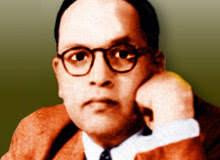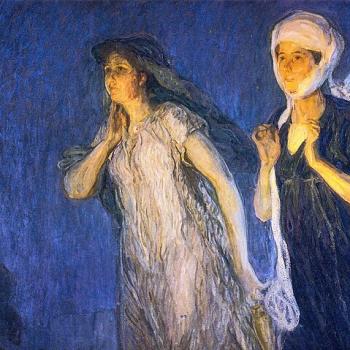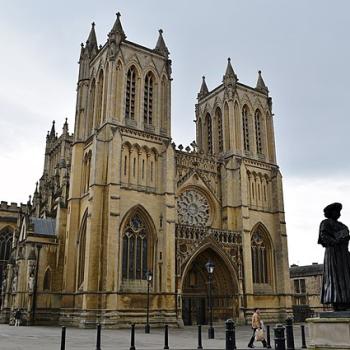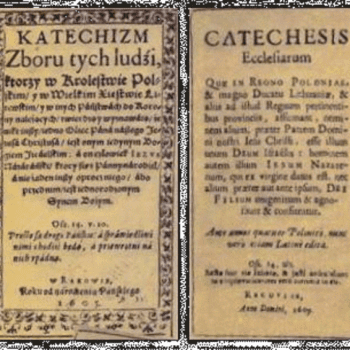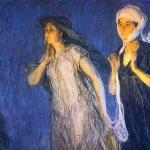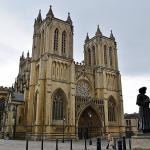On this day in 1932 Mohandas Gandhi and B. R. Ambedkar signed the Poona Pact.
It was a period of hardball politics, where Gandhi and Ambedkar representing on the one hand the leading upper castes of Indian society and Amdekar representing what we now call dalits, untouchables, and for which the polite term of the time was “depressed classes,” came together to stand against English rule.
I wish Ambedkar was more familiar outside India. A formidable figure, brilliant, difficult, and a true leader of liberation.
He also led uncounted untouchables to convert from Hinduism to a reformed Buddhism. Where this will go is not yet at all clear.
The Wikipedia article on the “Dalit Buddhist” movement offers some fascinating insights. The following paragraphs are from that article.
After publishing a series of books and articles arguing that Buddhism was the only way for the Untouchables to gain equality, Ambedkar publicly converted on October 14, 1956, at Deekshabhoomi, Nagpur. He took the three refuges and the Five Precepts from a Buddhist monk, Bhadant U Chandramani, in the traditional manner and then in his turn administered them to the 380,000 of his followers that were present. The conversion ceremony was attended by Medharthi, his main disciple Bhoj Dev Mudit, and Mahastvir Bodhanand’s Sri Lankan successor, Bhante Pragyanand.[6] Ambedkar would die less than two months later, just after finishing his definitive work on Buddhism.
Many Dalits employ the term “Ambedkar(ite) Buddhism” to designate the Buddhist movement, which started with Ambedkar’s conversion[6] and many converted people called themselves as “Nava-Bauddha” i.e. New Buddhists.
After receiving ordination, Ambedkar gave dhamma diksha to his followers. The ceremony included 22 vows given to all new converts after Three Jewels and Five Precepts. On 16 October 1956, Ambedkar performed another mass religious conversion ceremony at Chanda. He prescribed 22 vows to his followers:
- I shall have no faith in Brahma, Vishnu and Maheshwara nor shall I worship them.
- I shall have no faith in Rama and Krishna who are believed to be incarnation of God nor shall I worship them.
- I shall have no faith in Gauri, Ganapati and other gods and goddesses of Hindus nor shall I worship them.
- I do not believe in the incarnation of God.
- I do not and shall not believe that Lord Buddha was the incarnation of Vishnu. I believe this to be sheer madness and false propaganda.
- I shall not perform Shraddha nor shall I give pind-dan.
- I shall not act in a manner violating the principles and teachings of the Buddha.
- I shall not allow any ceremonies to be performed by Brahmins.
- I shall believe in the equality of man.
- I shall endeavor to establish equality.
- I shall follow the noble eightfold path of the Buddha.
- I shall follow the ten paramitas prescribed by the Buddha.
- I shall have compassion and loving-kindness for all living beings and protect them.
- I shall not steal.
- I shall not tell lies.
- I shall not commit carnal sins.
- I shall not take intoxicants like liquor, drugs etc.
- (The previous four proscriptive vows [#14-17] are from the Five Precepts.)
- I shall endeavor to follow the noble eightfold path and practice compassion and loving-kindness in every day life.
- I renounce Hinduism, which is harmful for humanity and impedes the advancement and development of humanity because it is based on inequality, and adopt Buddhism as my religion.
- I firmly believe the Dhamma of the Buddha is the only true religion.
- I believe that I am having a re-birth.
- I solemnly declare and affirm that I shall hereafter lead my life according to the principles and teachings of the Buddha and his Dhamma.
Nowadays many Ambedkarite Organisations are working for these 22 vows (i.e. 22 Pratigya). They believe that these vows only are responsible for the existence & rapid growth of present Buddhism in India. The umbrella organization known as the 22 Pledges Practice & Propagation Movement (i.e. in Hindi- 22 Pratigya Aacharan aur Prachaar Abhiyan) is fully devoted for this purpose. This totally non-political movement is the brain-child of Arvind Sontakke, and comprises around 5,000,000 volunteers (Pracharaks) including many regional and local groups throughout India.
The Buddhist movement was somewhat hindered by Dr. Ambedkar’s death so shortly after his conversion. It did not receive the immediate mass support from the Untouchable population that Ambedkar had hoped for. Division and lack of direction among the leaders of the Ambedkarite movement have been an additional impediment. According to the 2001 census, there are currently 7.95 million Buddhists in India, at least 5.83 million of whom are Buddhists in Maharashtra.[8] This makes Buddhism the fifth-largest religion in India and 6% of the population of Maharashtra, but less than 1% of the overall population of India.
The Buddhist revival remains concentrated in two states: Ambedkar’s native Maharashtra, and Uttar Pradesh — the land of Bodhanand Mahastavir, Acharya Medharthi and their associates.


